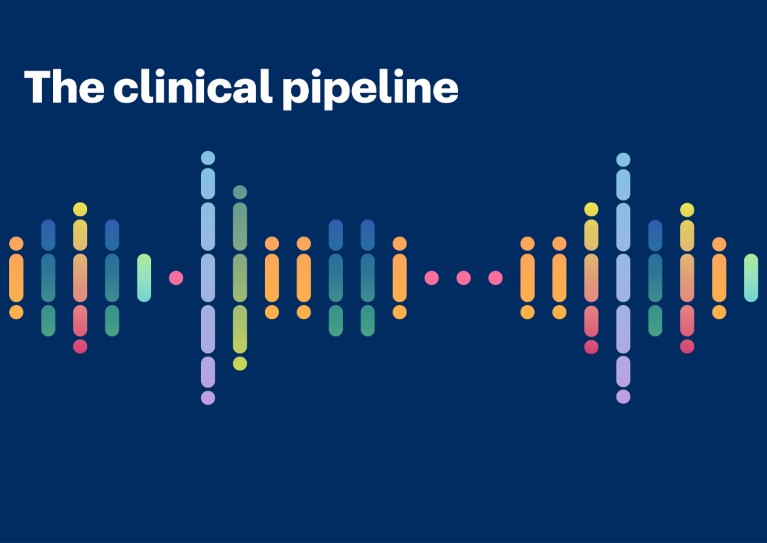
A team led by Oxford University’s Alexander Douglas reported disappointing phase 1 trial results for intranasal administration of the ChAdOx1 vaccine against COVID-19. Consisting of a replication-deficient chimpanzee adenovirus vector encoding the SARS-CoV-2 spike protein, the vaccine is usually delivered intramuscularly and has proven effective at preventing serious illness and death, but none of the current vaccines have had similar success at blocking viral transmission. Mucosal vaccines could potentially prevent SARS-CoV-2 infection at the point of viral entry in the respiratory tract, halting the spread of the virus. “We urgently need more research to develop vaccines which can block transmission of respiratory pandemic viruses using delivery routes which are safe and practical at large scale,” said Douglas in a press release.
There is a lot to unpack in the paper on intranasal ChAdOx1 published by Douglas and collaborators in eBiomedicine. Although the study enrolled only 42 participants, it included a mosaic of different treatment groups. The 30 participants who had not received a previous vaccination were split into three groups that received different doses. Those three vaccination-naive groups were further subdivided, with 14 participants scheduled to receive a intranasal booster 28 days later. The remaining trial participants had been previously vaccinated with two intramuscular doses of ChAdOx1 or BNT162b2 (Pfizer/BioNTech’s mRNA vaccine), and all received the highest intranasal dose as a booster.
The primary goal of this single-site, open-label study was to assess the safety and tolerability of intranasal vaccination, and this goal was met, with the most frequent side effects being sore throat, nasal discharge, headache and fatigue. The secondary goal of the study was to assess immunogenicity, by measuring serum and mucosal antibody responses to the SARS-CoV-2 spike protein.
Unfortunately, only a small fraction of the previously unvaccinated participants showed substantial induction of mucosal immunoglobulin A (IgA) or IgG directed against spike protein after the first nasal vaccination, irrespective of the dose. Serum IgG and IgA responses were also infrequent and of low magnitude. Analysis of data on the booster given at day 28 was complicated by a major confounding factor: 12 participants received, outside of the study, mRNA vaccine shots after taking the first intranasal dose of ChAdOx1; 11 of these had substantial levels of mucosal anti-spike IgG, and 5 showed induction of a mucosal IgA response (antibody data were not provided for the 12th participant). However, most of the remaining members of the vaccination-naive groups who received two intranasal doses of ChAdOx1 failed to develop mucosal IgA or IgG responses.
Similarly, the nasal ChAdOx1 booster failed to induce strong mucosal antibody responses in most of the 12 previously vaccinated participants. To top it all off, 7 members of the medium- and high-dose intransasal groups developed symptomatic COVID-19 during the trial period, although none required hospitalization. Thus, despite meeting its primary endpoint of safety, the study will not proceed to phase 2.
A recent survey of candidate nasal vaccines against COVID-19 published in Nature counted over 100 in development and 20 in clinical trials. In early September 2022, CanSino Biologics announced that China’s National Medical Products Administration had approved an orally inhaled version of its Convidecia, which uses an adenovirus type 5 vector encoding the SARS-CoV-2 spike protein, as a booster, and it is now being administered in Shanghai. CanSino published results of a 420-participant trial showing that in people previously vaccinated with two intramuscular doses of CoronaVac (Sinovac’s inactivated SARS-CoV-2 vaccine), a dose of nebulized Convidecia induced stronger neutralizing serum antibody responses than those induced by a third intramuscular dose of CoronaVac. A nasal spray vaccine, Bharat Biotech’s iNCOVACC, was also recently approved by India’s Central Drugs Standard Control Organization. The company submitted trial data to regulators but has yet to publish results.
Intranasal administration of ChAdOx1 had shown excellent results in hamsters and rhesus macaques, in terms of both immunogenicity and protection against SARS-CoV-2 infection. At least one other intranasal vaccine against COVID-19 was discontinued following phase 1 results showing good safety data but low immunogenicity — Altimmune’s AdCOVID, a nasal spray formulation of its adenovirus type 5 vector encoding the SARS-CoV-2 spike receptor-binding domain. Altimmune had also reported strong preclinical data.
This stark failure of intranasal vaccination to induce mucosal or systemic immune responses in humans after clear positive results in mice, hamsters and non-human primates highlights the need to develop more robust preclinical models for mucosal immunology. It is also important to note that Convidecia and iNCOVACC were approved by regulators on the basis of the induction of antibody responses to spike protein. More needs to be known about the correlates of protection in mucosal immunity in order to understand how, or even if, this will affect infection and transmission. Both natural SARS-CoV-2 infection and intramuscular vaccination have been shown to elicit IgA responses, and it is not clear how these affect reinfection rates. Of course, there are other valid reasons to develop intranasal vaccines, including their ease of administration and the need to reach people with a fear of needles. But those hoping that intranasal vaccines will break SARS-CoV-2’s transmission chains may have to wait for the field to find its ‘second wind’.
Source: Nature